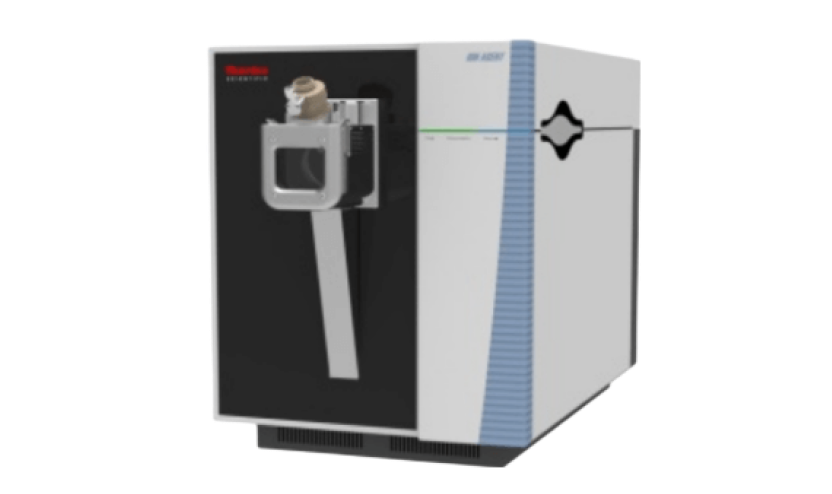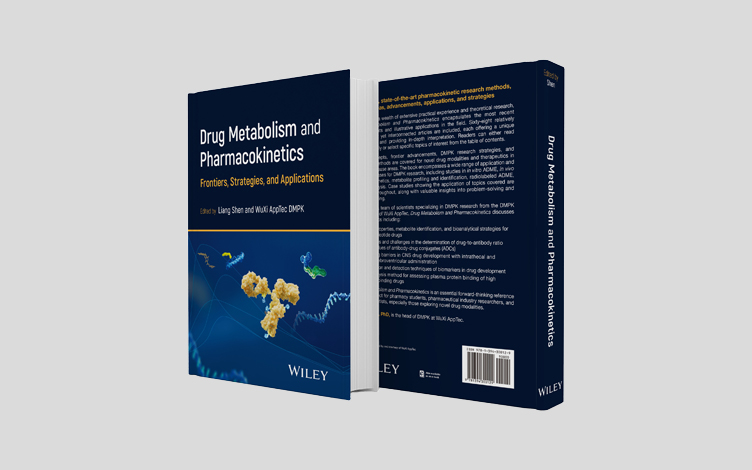-
Overview
-
Assays
-
Case Study
-
Experience
-
Instruments
-
FAQs
-
Related Resources
-
Related Services
Overview
WuXi AppTec DMPK can provide the service of radiolabeled MetID studies with [14C] and [3H] labeled compounds in vitro, in animals and human. Experimental assays include but not limited to: metabolic stability and metabolite identification studies in vitro (plasma, liver S9, liver microsomes or hepatocytes of multiple species), and in vivo (mice, rats, dogs, monkeys, and humans). The radiolabeled metabolite identification platform has been applied to various compound types, including conventional small molecules, high-polar and non-polar small molecules, natural products, nucleotides, Proteolysis-Targeting Chimeras (PROTACs*), peptides, ADCs, PDCs, oligonucleotides, etc.; Involved matrix types include blood, plasma, urine, feces, bile, tissues, etc.
Learn More


Assays
Case Study
-
-


Metabolite Radio-profiling and Identification of [14C]Compound A Following a Single Intragastric Administration of 3 mg/100 µCi/kg of [14C]Compound A to Sprague-Dawley Rats
[14C]Compound A was intragastric dosed to rats (3 mg /100 µCi/kg). Rat plasma, urine, feces, and bile samples were collected and pooled by AUC/equal volume/equal proportion for metabolite profiling and characterization. Radiolabeled metabolite profiles of rat plasma, bile, urine and feces samples were determined using LC coupled with on-line or off-line radioactivity monitor (LC-RAM) and structures of detected metabolites were characterized by LC coupled with high-resolution mass spectrometry (LC-RAM/HRMS). The Radio-Chromatograms of 0-72h bile was shown in the Figure.
-
Experience
-
15+
Years of experience in radiolabeled MetID studies
-
500+
Radiolabeled rodent and large animal ADME studies
Instruments
-
-


Liquid Scintillation Counter
-


β-RAM Online Radioactivity Detector
-


β-counter Solid Scintillation Counter
-


ARC Online Radioactivity Detector
-


High-Resolution MS
-
FAQs
Related Resources




-


GLP-1 Peptide Drug Radiolabeling and ADME Study Strategies
ArticlesDec 24, 2025Learn More -


Decoding Peptide ADME Challenges: Integrated Radiolabeled Synthesis & ADME Platform - DMPK Frontiers
VideosOct 24, 2025Learn More -


Mass balance, metabolic disposition, and pharmacokinetics of [ 14C] ensartinib, a novel potent anaplastic lymphoma kinase (ALK) inhibitor, in healthy subjects following oral administration
PublicationsOct 16, 2025Learn More -


Radiolabeled Synthesis and ADME Services
BrochuresOct 11, 2025Learn More -


The Application of Bile Duct Cannulation Animal Models in Radiolabeled Preclinical ADME Studies
PostersSep 11, 2025Learn More -


Radiolabeling Synthesis and ADME Profiling of GLP-1 Analogs: Strategies and Preclinical Insights
PostersAug 22, 2025Learn More -


Measurement of Phosphoinositide (PIP) Metabolism via Derivatization-Based Liquid Chromatography-Tandem Mass Spectrometry
PostersAug 12, 2025Learn More -


An Integrated Radiolabeling and ADME Platform for Peptide Drugs
WebinarsJul 17, 2025Learn More -


New Book Release: Drug Metabolism and Pharmacokinetics: Frontiers, Strategies, and Applications | WuXi AppTec DMPK
VideosJul 17, 2025Learn More -


Decoding DMPK Frontiers for Novel Therapeutics: WuXi AppTec DMPK’s New Book Release
BlogsJul 10, 2025Learn More -


Drug Metabolism and Pharmacokinetics: Frontiers, Strategies, and Applications
PublicationsJun 13, 2025Learn More -


High-Performance, Professional, Innovative: WuXi AppTec DMPK Accelerates Breakthroughs
VideosMay 22, 2025Learn More -


Metabolic disposition of [14C]-abivertinib, an epidermal growth factor receptor tyrosine kinase inhibitor: Role of glutathione conjugation
PublicationsApr 25, 2025Learn More -


Covalent Drugs DMPK Services
BrochuresApr 10, 2025Learn More -


Absorption, Metabolism and Excretion of Surufatinib in Rats and Humans
PublicationsApr 03, 2025Learn More -


Spotlight on Synthesis of Radiolabeled Compounds with DMPK Considerations and Applications in New Modalities
ArticlesJan 30, 2025Learn More -


WuXi AppTec DMPK: Your Trustworthy Partner
VideosDec 27, 2024Learn More -


Decoding DMPK Profiles of 37 FDA-Approved Peptides: Insights and Radiolabeling Considerations
BlogsOct 18, 2024Learn More -


List of Biological Sample Collection of Quantitative Whole-body Autoradiography (QWBA)
BrochuresAug 21, 2024Learn More -


Metabolite Identification of Nucleoside Analog Prodrugs in Biological Matrix by Derivatization Coupled with Radio-Detector and Mass Spectrometry
PostersMar 07, 2024Learn More -


Radiolabeled Mass Balance Studies in Preclinical Animals
PostersFeb 27, 2024Learn More -


Drug Metabolism and Pharmacokinetics (DMPK) Service
BrochuresOct 27, 2023Learn More -


Quantitative Whole-body Autoradiography (QWBA) Enables ADC Tissue Distribution Studies in Tumor-bearing Nude Rodents
BlogsAug 18, 2023Learn More -


Using Radiolabeling Techniques to Improve ADC Pharmacokinetic Studies
BlogsAug 18, 2023Learn More -


Application of Radiolabeling Techniques in ADC PK Studies
ArticlesJul 26, 2023Learn More -


Quantitative Whole-body Autoradiography (QWBA) vs. Mass Balance Studies
BlogsMay 04, 2023Learn More -


Tissue Distribution Using Quantitative Whole Body Autoradiography (QWBA) of [14c]-Paclitaxel in Tumor Bearing Mice
PostersMay 04, 2023Learn More
Stay Connected
Keep up with the latest news and insights.









































